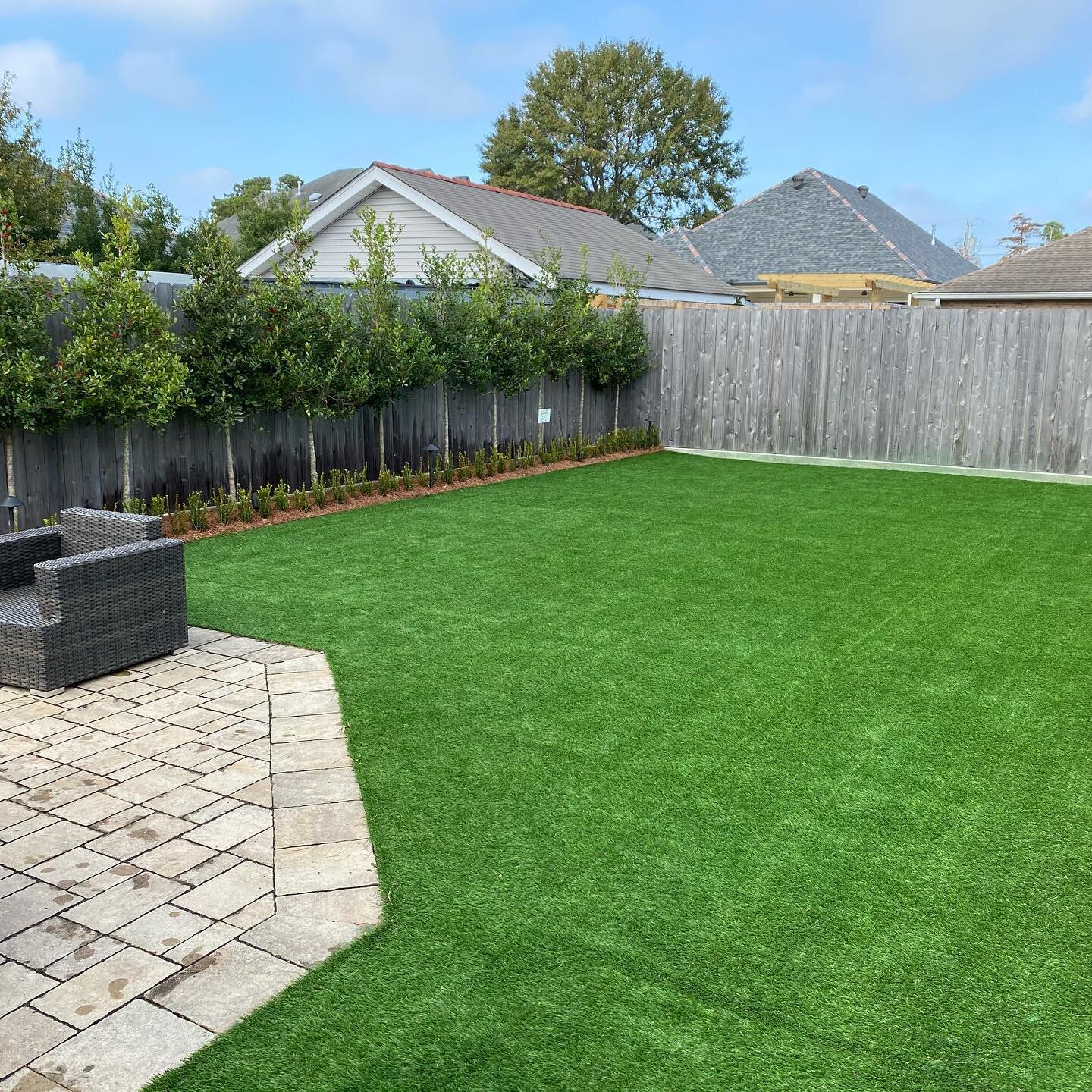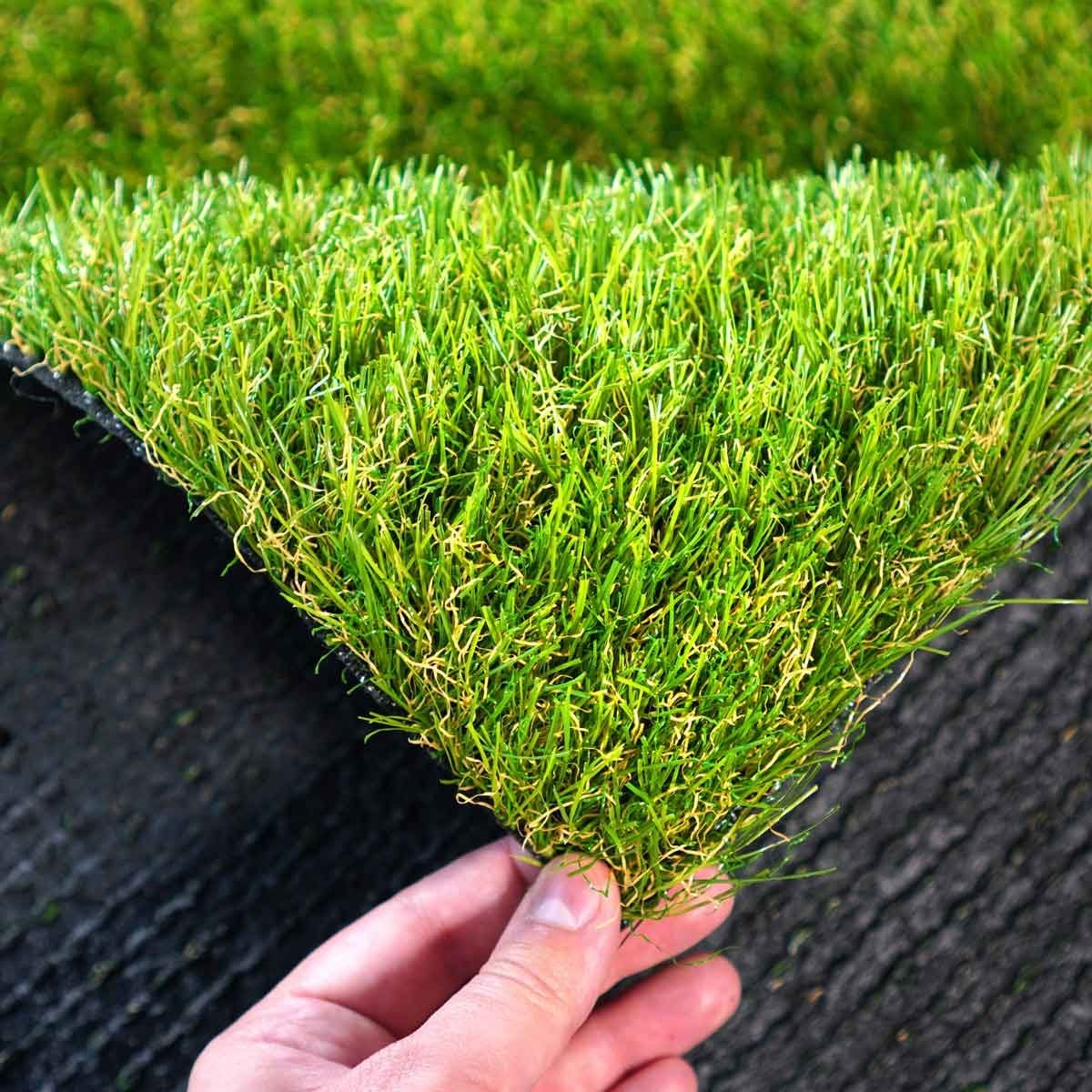Enjoy a Flawless Lawn with Arizona Artificial Turf for Any Outdoor Space
Enjoy a Flawless Lawn with Arizona Artificial Turf for Any Outdoor Space
Blog Article
Look Into the Environmental Advantages of Opting for Synthetic Grass Solutions
The adoption of man-made turf solutions provides a compelling possibility to address pushing ecological challenges. By dramatically minimizing water use and minimizing the application of dangerous chemicals, these choices not only promote lasting landscaping however likewise shield local ecological communities.
Water Preservation Conveniences
Among the most significant benefits of fabricated turf is its ability to preserve water. Conventional lawn yards require considerable irrigation, especially in areas prone to dry spell or water limitations. On the other hand, man-made lawn does not require watering, dramatically decreasing the general need for water resources. This function is specifically advantageous in arid regions where water shortage is a pushing concern.
By eliminating the requirement for routine watering, synthetic lawn adds to lasting landscape methods and aids minimize the environmental effect of extreme water usage. The conservation of water prolongs to the reduction of overflow, which can lead to soil erosion and waterway pollution.
Additionally, the installation of synthetic grass enables homeowners and municipalities to designate water sources a lot more efficiently, concentrating on essential uses such as alcohol consumption water and agriculture. The change in the direction of man-made grass not just advertises liable water use yet also lines up with more comprehensive environmental objectives targeted at preserving all-natural sources.
As neighborhoods increasingly prioritize sustainability, the water preservation benefits of synthetic grass provide an engaging situation for its fostering in business and domestic landscaping tasks.
Lowered Chemical Use
The transition to fabricated turf significantly lowers the dependence on chemical therapies frequently used in all-natural turf maintenance. Standard lawn management typically involves the application of pesticides, herbicides, and fertilizers to advertise development and control pests. These chemicals can present dangers to human wellness, local wildlife, and the environment, contributing to soil and water contamination.
In contrast, artificial turf removes the requirement for these hazardous materials. By decreasing the launch of synthetic compounds into the ecological community, synthetic grass promotes much healthier soil and water systems.
Furthermore, the absence of chemical drainage connected with synthetic grass setups helps secure regional waterways from air pollution, sustaining water life and keeping biodiversity. Artificial turf companies phoenix. As areas increasingly prioritize lasting methods, going with artificial lawn offers a practical service that aligns with ecological preservation objectives. Via this change, homeowner can appreciate lush environment-friendly spaces without endangering eco-friendly health, leading the way for a more lasting future
Lower Carbon Footprint

Moreover, the installation of artificial turf can result in considerable water preservation. Natural lawns call for substantial amounts of water for watering, which not just includes in the carbon footprint connected with water removal and therapy yet likewise stress regional water resources. On the other hand, synthetic grass requires very little upkeep, needing no watering, therefore dramatically minimizing water use and its linked energy costs.
Furthermore, the long life of artificial turf adds to its reduced carbon effect. With a lifespan of as much as 15 years or even more, the need for regular substitutes is reduced, leading to less waste and lower power usage in production and disposing of conventional lawn options. Generally, fabricated lawn provides a sustainable alternative for ecologically aware landscaping.
Environment Conservation
Habitat preservation is an essential consideration in the dispute over landscaping options, particularly when comparing synthetic grass to natural grass. Natural grass yards commonly call for extensive maintenance, consisting of the usage of herbicides, fertilizers, and chemicals, which can detrimentally influence regional ecological communities. These chemicals can seep right into the dirt and rivers, damaging indigenous vegetation and fauna and disrupting click to read more regional environments.
Artificial grass eliminates the requirement for dangerous chemicals, therefore protecting nearby wildlife and preserving the stability of bordering communities. The installment of artificial lawn can lead to the conversion of former yard areas into even more biodiverse landscapes, such as pollinator yards or native plant areas, which can sustain local wild animals.
Ultimately, the transition to synthetic grass not just conserves water and lowers maintenance efforts but likewise cultivates a more harmonious relationship between human tasks and the native environment, promoting environment conservation while doing so.
Long-Term Sustainability
Long-term sustainability is an important consider reviewing the benefits of synthetic go to this website grass over traditional grass yards. Among the most substantial benefits of synthetic grass is its durability; it can last approximately 15-20 years with minimal upkeep, whereas all-natural turf requires regular reseeding and replacement. This longevity decreases the demand for continuous sources, such as water, fertilizers, and pesticides, which are necessary for keeping a healthy and balanced turf lawn.
In addition, synthetic grass adds to a decrease in carbon exhausts related to lawn care equipment. Traditional lawns often need gas-powered lawn mowers, leaners, and blowers, every one of which contribute to air pollution. Phoenix turf companies. On the other hand, synthetic turf gets rid of the requirement for such tools, advertising a cleaner setting
Additionally, the production of man-made turf progressively uses recycled materials, enhancing its sustainability profile. As manufacturers take on environment-friendly techniques, the environmental impact of artificial grass remains to decrease.

Conclusion
The adoption of man-made lawn solutions provides substantial ecological benefits, consisting of significant water preservation, decreased dependence on hazardous chemicals, and a lower carbon footprint. Man-made grass aids in protecting natural habitats by lessening land disruption and advertising lasting sustainability through the use of long lasting products. Collectively, these variables highlight the possibility of synthetic grass to contribute positively to environmental wellness and use a practical option to traditional landscape design techniques in a significantly resource-conscious world.
In contrast, man-made turf does not need watering, significantly lowering the overall demand for water sources. By lessening the release of artificial compounds into the ecological community, artificial grass advertises much healthier dirt and water systems.
In addition, the installment of man-made grass can result in significant water conservation. In comparison, man-made grass needs marginal upkeep, calling for no watering, consequently significantly minimizing water use and its associated energy expenses.

Report this page